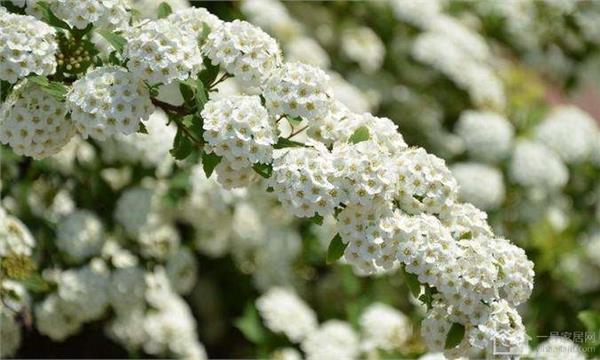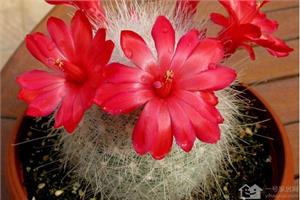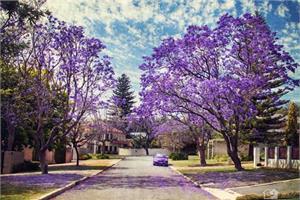The knowledge of Spiraea the mode of reproduction of Spiraea
Spiraea, also known as the tip of the locust, is a typical bisexual flower. The color of the flower is mainly white, and the florescence is relatively long, so it is often used for garden landscape cultivation. Let's take a look at the knowledge of Spiraea.

Introduction of Spiraea
Spiraea is a plant variety of Spiraea in Rosaceae. Bright pink flowers bloom in summer, cultivated for ornamental use, but also a source of honey.
Spiraea
2. Morphological characteristics of Spiraea
Erect shrubs, 1-2 m tall; branches dense, branchlets slightly angular, yellowish brown, twigs pubescent, glabrescent when old; winter buds ovate or oblong-ovate, apex acute, with several brown exserted scales, outside sparsely fine pubescent. Leaf blade oblong-lanceolate to lanceolate, 4-8 mm long and 1-2.5 cm wide, apex acute or acuminate, base cuneate, margin densely sharply serrate, sometimes doubly serrate, both surfaces glabrous; petiole 1-4 mm long, glabrous.
Inflorescences oblong or pyramid-shaped panicles, 6-13 mm long, 3-5 mm in diameter, finely pubescent, flowers dense; pedicels 4-7 mm long; bracts lanceolate to linear-lanceolate, entire or with a few serrate, minutely pubescent; flowers 5-7 mm in diameter; calyx tube campanulate; sepals triangular, inner surfaces minutely pubescent. Petals ovate, apex usually obtuse, 2-3 mm long, 2-2.5 mm wide, pink; stamens 50, ca. 2 times longer than petals; disk annular, lobes crenulate; ovary sparsely pubescent, style shorter than stamens. Follicles erect, glabrous or pubescent along ventral sutures, style terminal, obliquely spreading, often with reflexed sepals. The flowering period is from June to August and the fruiting period is from August to September. The plant height is 30-50 cm, and the plant type is plump, nearly semicircular and tufted.
Leaves long ovoid or Obovate, alternate. The new leaves are golden yellow and the old ones turn yellowish green and glossy. Deciduous erect shrub, up to 2m tall, dense branches, branchlets angled and short hairy, simple leaves alternate, leaf blade oblong-lanceolate, margin densely sharply serrate, both surfaces glabrous, petiole short, glabrous, oblong panicle inserted on top of current year's leafy long branches, 6-13cm long, hairy, flowers dense, bisexual flowers, umbels terminal, pollen red, flowers short, petals pink, stamens 50 protruding from petals. Flowers have disk, bracts, calyx and sepals, all hairy, follicles erect, ca. 5mm high, hairy along ventral sutures and with reflexed sepals, florescence from June to September, fruit ripe from August to October.
Second, the reproduction mode of Spiraea
1. Sowing, dividing plants, and cutting can be done.
Spiraea can be propagated by seeds or cuttings. After the seeds are ripe, the seeds can be picked and sown, and the budding rate is relatively high. In general, seedlings can be formed in the second year. If you need a large number of seedlings, it is best to use cuttings to propagate. Spiraea chinensis, like other plants of Compositae, has a high survival rate and can reproduce except in winter, but it has the best effect with two leaves from May to September. Perlite, vermiculite or river sand with good water retention can be used in the matrix. The robust and substantial branches of the year were selected as cuttings, soaked in ABT rooting powder 50ppm, watered and foliar sprayed regularly. From May to September, it can take about 15 days to take root, and the survival rate is more than 80%.
two。 Growth period management
Spiraea is fertilized twice a year, once as winter fertilizer and organic fertilizer in winter or early spring, and once after falling flowers. In general, Spiraea trees can adopt the method of hole application, that is, at the edge of the canopy: the edge of the projection line, dig a circular ditch about 10 meters deep, and apply fertilizer. This method is not only simple and beneficial to root absorption, but also increases the diameter and depth of ring trench with the growth of trees. It is required to have good drainage and ventilation and timely ploughing. According to the demand of the tree, it can be watered reasonably and sprayed with new high-fat film to protect fertilizer and soil moisture.
3. Pruning and curing
Pruning is mainly to cut off withered branches, overgrown branches, overlapping branches and disease and insect branches. Spiraea is very cold-resistant, drought-resistant, if you prune the branches and leaves, then Spiraea will work very hard to grow new branches and leaves. The pruned branches should be treated with healing and anticorrosive film in time to make the wound heal quickly and prevent bacteria from invading and causing rot after rain. During the period of flower bud differentiation, spraying Chuhuawang No. 3 could transform plant vegetative growth into reproductive nutrition, inhibit the crazy growth of main shoots, promote flower bud differentiation and bloom more. Spiraea is safe to survive the winter, it is necessary to spray tree protection generals to protect trees from freezing, expel overwintering viruses, insect pests fall on the trees to multiply, and urge fruit trees to hibernate early and restore their vitality.
The above is the knowledge of Spiraea. I hope I can help you.
Related
- Wuhan Hospital Iron Tree Blooming Result Was Instantly Frightened by the Gardener Master
- Which variety of camellia is the most fragrant and best? Which one do you like best?
- What is the small blue coat, the breeding methods and matters needing attention of the succulent plant
- Dormancy time and maintenance management of succulent plants during dormancy
- Minas succulent how to raise, Minas succulent plant pictures
- What are the varieties of winter succulent plants
- How to raise succulent plants in twelve rolls? let's take a look at some experience of breeding twelve rolls.
- Attention should be paid to water control for succulent plants during dormant period (winter and summer)
- Watering experience of twelve rolls of succulent plants
- Techniques for fertilizing succulent plants. An article will let you know how to fertilize succulent plants.



